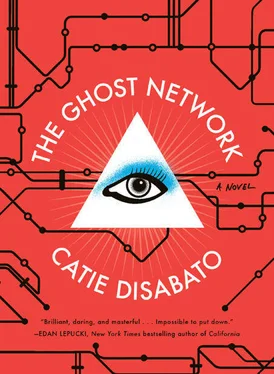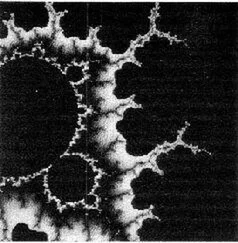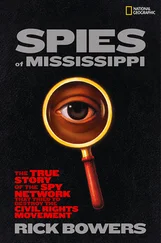With permission from Nix, Taer took off her shirt and put on one of Molly’s. he shirt fit poorly, so she tried on another. Nix joined in. They tried on tight black jeans, Marc Jacobs black blazers, vintage leather ankle boots, Jeffery Campbell wedges, studded black leather vests and coats, T-shirts by Mary-Kate and Ashley Olsen’s clothing line The Row, tights with holes up the back of the thigh, Chanel pantsuits and see-through shirts made of vintage lace. They took pictures with Nix’s phone. Nothing fit; Nix’s hips were too wide, her feet were too big, and her torso was too long. Taer’s breasts were too large to fit into Molly’s shirts and the pants were too small. When they finished trying something on, they folded it and packed it into one of their cardboard boxes, which Nix would eventually ship to Molly’s family.
They packed for hours, drawing out the process by ordering a boozy lunch from room service. Eventually, and only half seriously, Taer started looking for hiding places. She searched for secret drawers in the desk and checked to make sure the mattress, sofa cushions, and pillows were plush, not re-stuffed with “money, drugs, or other secret things.” Then she went around the room, moving each painting to see whether a safe was hidden behind one of them. Some of the art on the wall belonged to the hotel; some of it belonged to Molly and traveled with her to each stop on her tour. Molly had a map of the original Chicago L system, a screen print of an island, and a screen print of a map of changes to the Chicago L system that had been proposed by city planner Daniel Savoy in 1962, but rejected by the Chicago Public Transport Subcommittee. ǁ
Taer didn’t find anything until she reached the screen print above Molly’s bed: the island, printed in a shocking pink ink, with several dozen tiny drawings of ships surrounding the coastline. The screen print was signed by “Antoine Monson.” Unlike the maps of the L, obvious depictions of Taer’s own city, which seemed normal to her only because she didn’t think about them hard enough, the screen print of the island seemed unusual. Taer asked Nix about it, but Nix only knew Molly liked it, not why she did. She suspected Molly was drawn to the shipwrecks, represented by those tiny ships dotting the shoreline. Shipwrecks meant error, disaster, and horror; those were the kind of monstrosities that captivated Molly. She clung to frightening things. Nix knew that, but she didn’t know anything about the screen print; she didn’t even know the island’s name.
Molly Metropolis’s family graciously allowed me to borrow the screen print during the writing of this book, to facilitate my research. (It also served as a kind of motivational poster for me — like the kitten hanging from the tree with the caption “Hang in there!”—when completing this project seemed like an impossibly daunting task.) Because of the Young family’s generosity, I was able to research the island in Molly’s hot pink map.
The island on the screen print is called Sable from the French île de Sable , or “Sand Island,” though the island’s foundation, while sand-covered, is actually made of solid rock and below that, reef. The island is a narrow sliver of land, 27 miles long but never more than 1.2 miles wide, located in the Atlantic Ocean 109 miles off the southeast coast of Nova Scotia. Discovered by Portuguese explorer Joao Alvares Fagundes, the island was originally named Fagunda.
After thoroughly traversing the waters adjacent to what would become Nova Scotia, Fagundes returned to Portugal and published a map of the coastal area, including the island he called Fagunda. He also published a detailed land map of Fagunda itself. Nearly fifty years later, after Fagundes’s death, an inconsequential trading ship that happened to be carrying a somewhat well regarded cartographer, Lázaro Teixeira, reported that Fagunda wasn’t where Fagundes’s map claimed it should be. Teixeira drew up a new map of the area that excluded Fagunda and spread the story that Fagundes created a false island in order to give something his own name. Several other cartographers and shipmen on the trading vessel corroborated Teixeira’s story.
It was a testament to Fagundes’s lasting popularity in Portugal and Spain that the royal families and academics of each country assumed that Fagundes hadn’t lied but instead that his island had been “lost,” washed away by a storm or sunk into the sea. They called it a “phantom” island and attributed it with ghost-like qualities, such as the ability to appear and disappear. More than one shipman, dying from wounds or delirious from illness, claimed to see “Fagunda, the Island of Dead Seaman” beckoning him from beyond the grave.
A century later, Fagunda is still the poster child for cartographic misconceptions of the early exploratory age. However, Fagundes’s island wasn’t a cartographic misconception; the island actually existed — it was just so narrow, and the cartographic equipment of the time so crude, that it was difficult to find. The island’s extreme thinness makes it difficult for even military-grade radar detection devices to pick it up.
At some point in the late nineteenth century, another sailor found the island, took some measurements of it, and reasserted its validity, but no one publically documented it until the Nova Scotian government commissioned a map of the coastline in 1902, and renamed Fagunda as Sable Island.
Currently, the island officially sits within the Halifax Regional Municipality in Nova Scotia, but as part the 1972 Canada Shipping Agreement between Canada and Nova Scotia, the Canadian Coast Guard is responsible for the island’s safety and security. No one can visit without written permission of Canadian Coast Guard College (CCGC). Approximately five people permanently inhabit the island; they all live and work at the Sable Island Station, an environmental research complex owned by the University of Toronto. The island’s true inhabitants are the wildlife, most prominently several thousand snub-nosed blue seals and over 300 feral horses.
Because the low, thin island is so difficult to see, it’s caused a large number of shipwrecks over the centuries, often illustrated on maps of the island, like Molly Metropolis’s screen print where the shipwrecks are represented with tiny drawings of colonial-era ships. With approximately 350 shipwrecks on its shores between 1583 and 1999, Sable earned the nickname “The Graveyard of the Atlantic.”
The final shipwreck to date, in 1998, was also the only wreck of a private yacht, called the Merrimac . The yacht possibly belonged to an American family. The CCGC investigated the crash but determined that the causes were “non-criminal.” The records of the investigation, like all records of non-criminal investigations that occurred before the police digitized their files, were trashed ten years after the investigation closed, in 2009, before Molly disappeared. The Canadian aquatic force sent two or three copies of the report to the FBI summarizing the investigation, indicating that they believed the victims were American. Although the FBI was more than willing to provide me with the files under the Freedom of Information Act, they couldn’t find them. Probably misfiled, the records won’t be recovered for years, when the FBI finishes digitizing many decades’ worth of physical, low-priority files. As a result, few verifiable details of the wreck survive.
Relying on rumor to guide me towards truth, I discovered that an American family was causing some trouble about Sable a year before the shipwreck. Charles and Margot Pullman, a wealthy couple, both successful architects and cousins to the Daley family on Margot’s side, had a ten-year-old daughter, Elizabeth — a spoiled and precocious child. Elizabeth read about Sable in an Encyclopedia Britannica and developed a strong desire to own one of the island’s feral horses. Charles and Margot, to reward Elizabeth’s inquisitive bookishness, began pursuing legal means to acquire a Sable Island horse for their daughter.
Читать дальше












